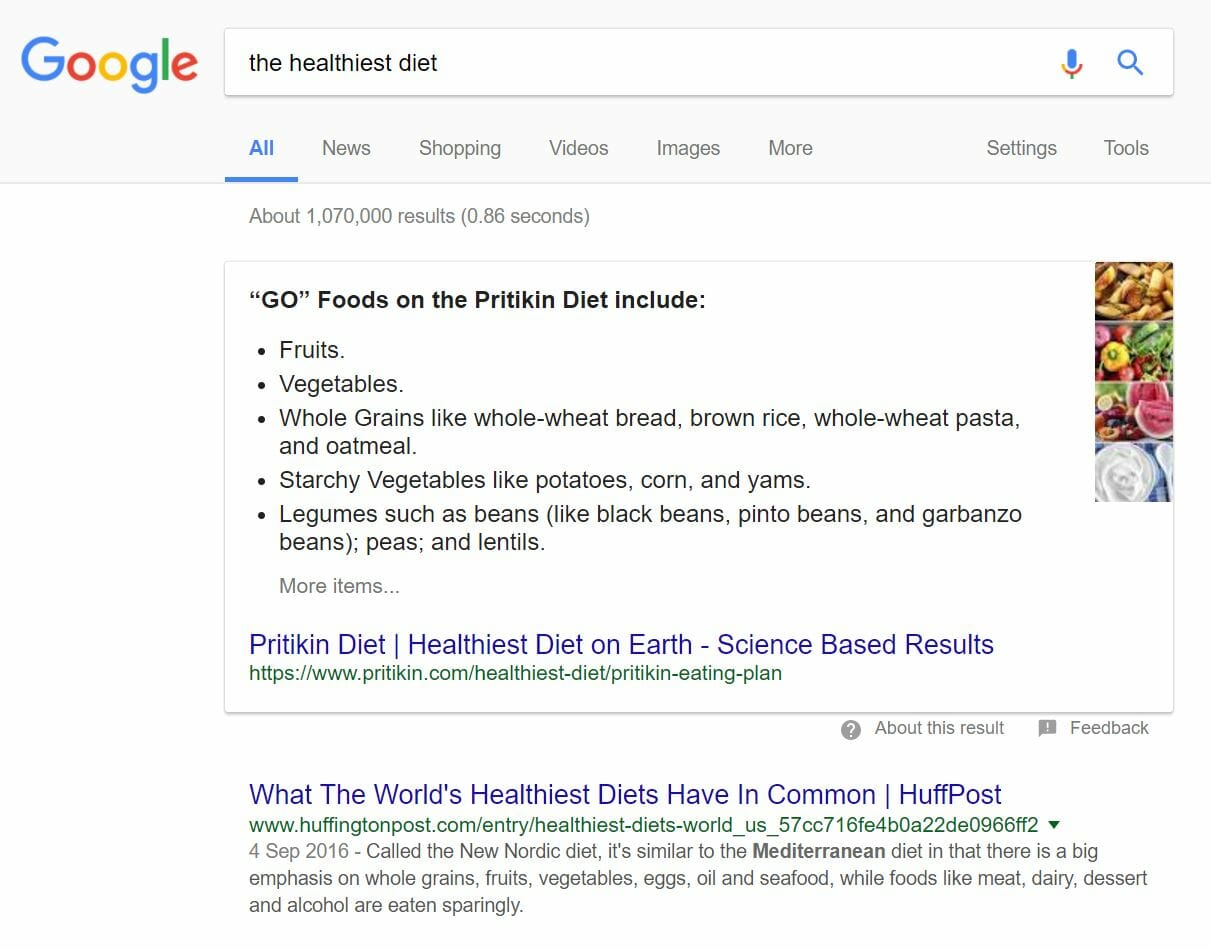Search engine optimisation is a crucial element to every website on the internet, especially with the fact that the vast majority of websites get the vast majority of traffic from search engines such as the big ‘G’ being Google. Making sure your website and your articles you publish online have good SEO is critical to ensuring that the ranking of your website/articles are as high as possible organically. With this, here is a look and analysis of organic search results for the search phrase, ‘the healthiest diet’.
The below image is a screenshot of the search results for the above search phrase with Google search UK:
Featured snippets get a lot of attention and produce high click through rates. Therefore, to help get your articles onto the featured snippet, it would be wise to:
- Use different headings throughout your content.
- Ask questions in the heading and answer straight away in the content after.
- Produce high quality, targeted, niche content (yes, you have probably heard this all the time. However, the best content naturally will feature as a featured snippet).
Looking at the next result down, from the Huffington Post, you can see that they have used meta descriptions to make the description area more SEO-friendly – nowadays it is a good idea to adopt a SEO-friendly meta description for all of your new posts. The title is also good, including the right keywords and also evoking curiosity from the web user to find out what the healthiest diets have in common. However, this organic result is let down by the URL, which is neither pleasant to look at or SEO-friendly. From just the URL alone, you should be able to determine what the article is about. Yes, we can tell it is about the healthiest diets. But, what about the diets – what does the numbers mean at the end of the URL?
Looking further down the page, we can see the following results:
- The ‘Pritikin Diet’ is coincidently the top featured snippet result. This is common for Google to rank the same article twice on the same page of search results: 1) for the featured snippet at the top and the other to be as a ‘standard’ search result format.
- Even though this result in ranked second behind the Huffington post, it does hold very good SEO. It features as the featured snippet and also contains extra links below the description. This is because the internal links used in the article are also related to the search phrase, making them applicable to be shown with the article on Google. This goes to show that internal linking can actually have an impact as to how your advert looks organically.
- The results below this do not have meta descriptions, which could be seen to be the reason why they have ranked lower than the results that have used meta descriptions – this can be made clear from the ‘…’ at the end of the description.




